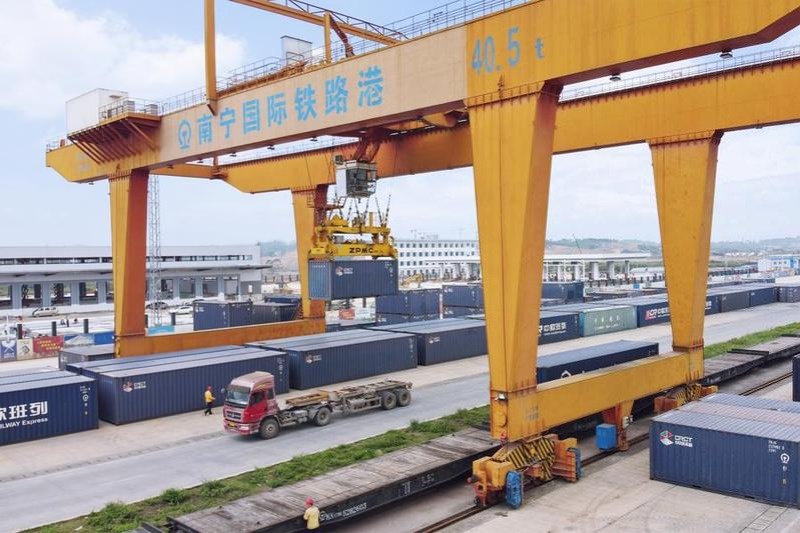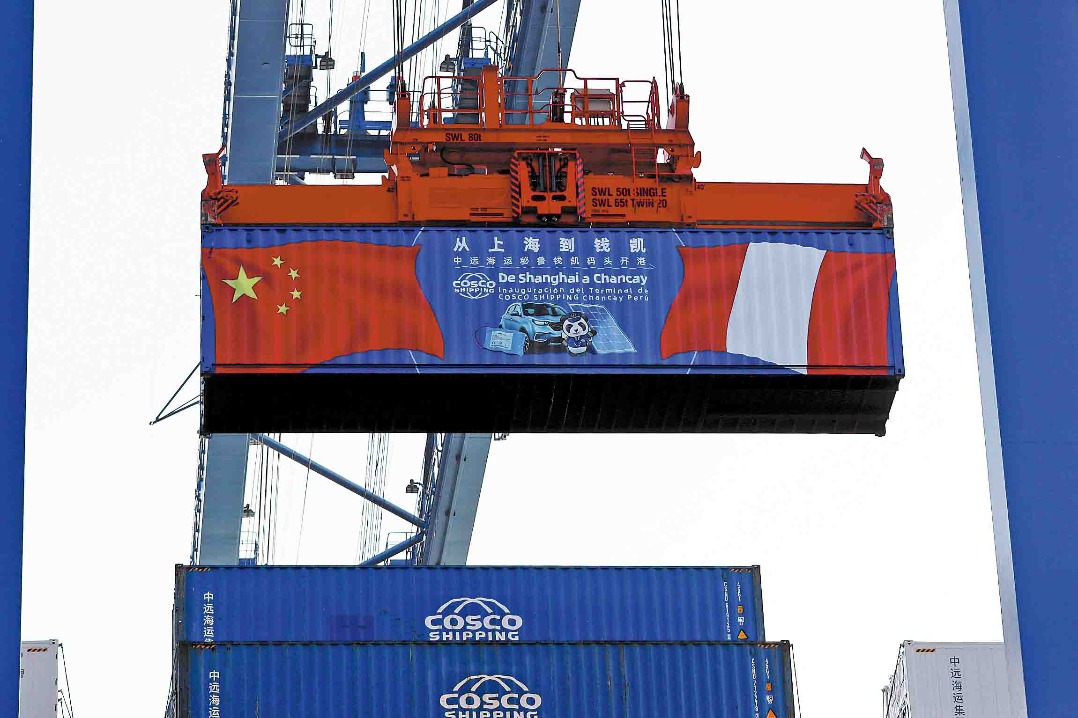5 cities rise as intl centers for consumption
Policies including instant tax refunds, visa-free transit offer significant boost

China is accelerating the building of five major cities — Shanghai, Beijing, Guangzhou in Guangdong province, Tianjin and Chongqing — into international consumption centers on a par with global metropolises such as New York, Paris and Tokyo, as part of the country's broader efforts to boost domestic spending.
From the perspective of global standards, international consumption cities are often regarded as "shopping paradises" with advanced commercial facilities and strong purchasing power of consumers, industry insiders said.
Consumption's key role as a driver of economic development has long been a key focus of China's top leadership.
In November 2021, President Xi Jinping said in a speech delivered via video link at the opening ceremony of the fourth China International Import Expo in Shanghai that China will firmly share market opportunities with the world, including promoting the integration of domestic and foreign trade and accelerating the building of international consumption cities.
About four years ago, with the approval of the State Council, China's Cabinet, the decision was made that the five cities would take the lead in being developed as international consumption centers.
Zhang Xiaoying, a researcher at the Guangzhou Academy of Social Sciences, said, "Given the profound changes in the global economic landscape, building international consumption cities is of great significance for China in boosting the consumption market, promoting industrial upgrading, driving high-quality development and further expanding opening-up to the outside world."
In the past few years, the five selected cities have continued to innovate diversified consumption scenarios, and high-quality global resources are accelerating their presence in those cities.
Inbound travel has emerged as a bright spot in these cities. China unveiled a set of measures in April to further optimize its departure tax refund policy for eligible overseas visitors and instant tax refund services have been implemented nationwide.
Marco, a traveler from the Netherlands who didn't disclose his surname, visited Beijing for the first time in June with a friend. He shopped in the bustling Guomao area, the capital's central business district, and received an instant tax refund for the products he bought.
"Being able to buy tax-free goods is always good, just like in many other countries. We assumed there would be something like this here, and we learned the policy at the entry of the shopping mall," Marco said.
In 2024, the number of inbound foreign visitors to the five cities doubled year-on-year, and the number of tax refund stores in those cities accounted for about 60 percent of the country's total. This year, China will increase the number of tax refund stores to about 10,000 nationwide, almost tripling the current number, the Commerce Ministry said.
"The number of such stores in China is far from enough," said Sheng Qiuping, vice-minister of commerce.
Sheng noted that Japan has more than 60,000 stores available for tax refunds for overseas visitors. South Korea has some 20,000 such stores, while France, Germany and Italy have over 10,000 each.
Andrea Yue, partner of indirect tax services at professional services firm EY, said the instant tax refund service has helped stimulate consumption in China. Combined with the country's 240-hour visa-free transit policy, it is expected to further promote the growth of inbound tourism and tourist spending.
Against the backdrop of mounting economic challenges at home and abroad, China's policymakers have swiftly responded with coordinated measures to boost consumption, while prioritizing consumption as the nation's top economic initiative this year.
Shanghai, which is among Chinese cities with a high concentration of foreign tourists, has been striving to build itself into a major global tourist destination. The city is now home to theme parks such as Shanghai Disney Resort, Shanghai Haichang Ocean Park and Shanghai Legoland Resort.
The city has also been holding various top international events such as the Formula 1 Chinese Grand Prix.
Furthermore, China will encourage the development of cruise tourism and the low-altitude economy to boost the building of international consumption centers, according to the Commerce Ministry.
Chongqing, a mountainous city in Southwest China, has vigorously developed its low-altitude sector, which centers around activities, businesses and services conducted at altitudes below 1,000 meters above ground level.
The megacity aims to build a low-altitude logistics network that links its urban and rural areas, as well as connects with Chengdu, Sichuan province, and other parts of the country, according to a document released by the local government in early June.
Late last year, a new low-altitude flight was launched at Chongqing Wushan Airport, allowing tourists to experience the magnificent scenery overlooking the Three Gorges of the Yangtze River.
China's coastal cities such as Shanghai and Tianjin are embracing a wave of international cruise tourism, as more domestic and foreign cruise lines are introducing various types of voyages.
China is also building its second domestically made large cruise ship, the Adora Flora City, in Shanghai, and the vessel is scheduled for delivery in 2026. The first domestically built cruise ship, the Adora Magic City, has completed more than 100 voyages, providing more than 350,000 passenger trips, according to China State Shipbuilding Corp.
zhuwenqian@chinadaily.com.cn




































